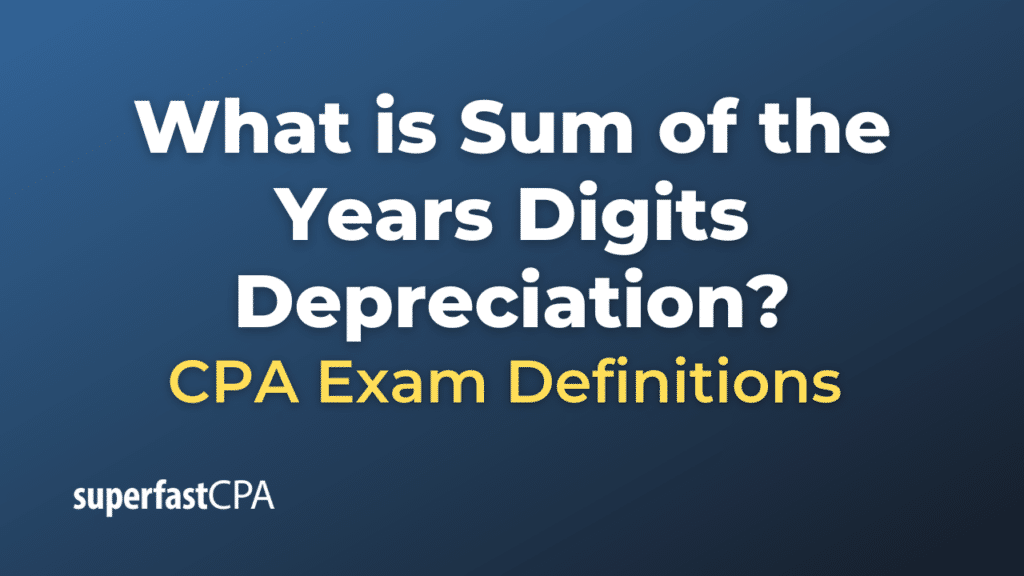Sum of the Years Digits Depreciation
Sum of the Years’ Digits (SYD) Depreciation is a method of accelerated depreciation. Unlike the straight-line method which spreads the depreciation evenly over the useful life of an asset, the SYD method assigns a decreasing fraction of the depreciable amount to each period.
Here’s how it works:
- Determine the Asset’s Useful Life in Years: Let’s say the asset has a useful life of 5 years.
- Compute the Sum of the Years’ Digits: You do this by adding together the numbers for each year of the asset’s life. Using our example of 5 years: SYD=1+2+3+4+5=15
- Calculate the Annual Depreciation: Each year’s depreciation expense is calculated by taking the fraction of its number over the sum of the years and multiplying it by the depreciable amount (which is the cost of the asset minus its salvage value). Using an asset cost of $1000 and a salvage value of $100 as an example:
- Year 1: 5 / 15 * ($1000 – $100) = $300
- Year 2: 4 / 15 * ($1000 – $100) = $240
- Year 3: 3 / 15 * ($1000 – $100) = $180
- Year 4: 2 / 15 * ($1000 – $100) = $120
- Year 5: 1 / 15 * ($1000 – $100) = $60
You’ll notice that the depreciation expense is higher in the earlier years of the asset’s life and decreases over time. This is why it’s called an “accelerated” method – because more of the asset’s cost is written off in the earlier years of its useful life.
The SYD method can be beneficial for businesses that want to recognize larger depreciation expenses upfront for assets that may lose value more rapidly in their early years. However, it’s essential to ensure that the method used aligns with how the asset is utilized in the business and matches its actual wear and tear.
Example of Sum of the Years Digits Depreciation
Let’s use a tangible example involving a company car.
Scenario: Company XYZ buys a car for business purposes. The car costs $25,000, and they estimate it will have a salvage value (residual value) of $5,000 after its useful life of 5 years.
Steps:
- Determine the Car’s Useful Life in Years: 5 years.
- Compute the Sum of the Years’ Digits:
SYD=1+2+3+4+5=15 - Calculate the Annual Depreciation:
The depreciable amount is the difference between the cost of the car and its estimated salvage value:
$25,000 – $5,000 = $20,000.
Now, let’s compute the depreciation for each year:- Year 1: 5 / 15 x $20,000 = $6,666.67
- Year 2: 4 / 15 x $20,000 = $5,333.33
- Year 3: 3 / 15 x $20,000 = $4,000.00
- Year 4: 2 / 15 x $20,000 = $2,666.67
- Year 5: 1 / 15 x $20,000 = $1,333.33
Summary:
- Total Cost of the Car: $25,000
- Total Depreciation Over 5 Years: $20,000
- Salvage Value: $5,000
Annual Depreciation:
- Year 1: $6,666.67
- Year 2: $5,333.33
- Year 3: $4,000.00
- Year 4: $2,666.67
- Year 5: $1,333.33
As seen from the above calculations, the depreciation expense is the highest in the first year and gradually decreases every subsequent year. This reflects the accelerated wear and tear or obsolescence typically experienced by assets such as vehicles.













